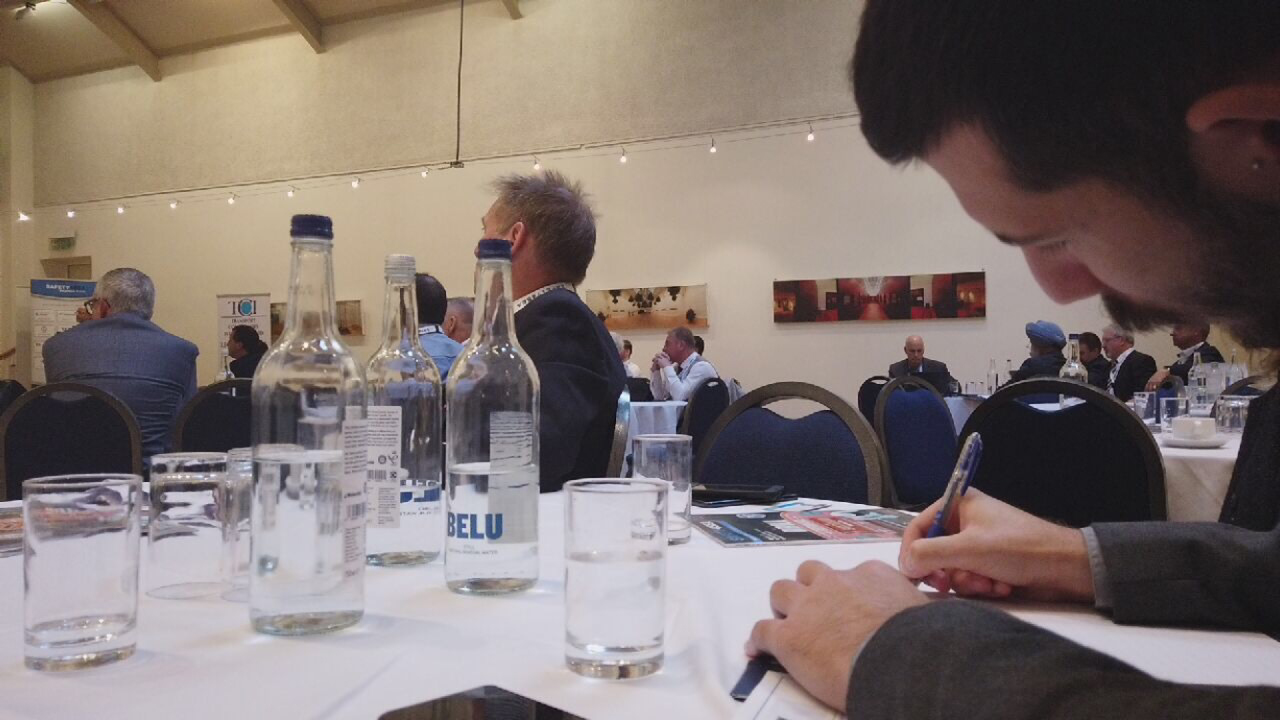SAFETY4SEA and the MEGA-BOXSHIP Solutions Working Group for the first time cooperated to organize a seminar which successfully concluded on Tuesday 10th of September, at the Hellenic Centre in London. The event, which took place within the framework of the London International Shipping Week, attracted 100 delegates from a total of 45 organizations.
Sponsors of the first Megabox Forum were: Alaska Maritime Prevention & Response Network, Albatross Adjusters Limited, Braveheart Marine BV, Clean Sea, Combi Lift, C Solutions, DÖHLE GROUP, Pro Liquid, The Standard P&I Club, T&T Salvage, Taylor Marine TR Little and TCI Maritime Consultants.
Opening the event, Olivier Texier, Department Director – Marine Safety Environment Division, CMA CGM and Mauricio Garrido, President, T&T Salvage LLC welcomed delegates, introducing briefly the agenda. Among many key issues, global experts provided insight on key challenges of containerships and discussed about contributing factors that increase risk of casualties onboard this type of vessels and the frequency of containership fires, suggesting preventive actions and best practices. Also panellists exchanged views with the audience on the importance of human element and how we could reduce overload on the crew and become proactive rather than being reactive. Lastly, discussions were focused on handling emergency lightering offshore and a fire scenario for lessons learned.
Panel #1 – What is the Problem? – Challenges and Risks
Tom Sommerwerck, Managing Director, Döhle Havariekontor GmbH & Co. KG, Capt. John Dolan, Deputy Director of Loss Prevention, The Standard Club, Jim Allsworth, Regional Director – Claims Director, C Solutions Limited and Costas Karaloizou, Director, Albatross Adjusters Ltd examined containership challenges and risks under the current regulatory framework and discussed what needs to be further addressed among industry stakeholders in due course. They also talked about salvage operation challenges, mentioning that this year, many fires onboard containerships have been reported so far. Bigger ships hinder bigger risks, they noted and debated on whether technology advance in ships is a contributing factor to increase risk of casualties onboard such type of vessels.
Panel #2 – Closing the Gap; the Human Element
Stephan Hennig, UK SOSREP (The Secretary of State’s Representative), Joannis Bloch Danielsen, Claims Manager, Norwegian Hull Club, Elias Psyllos, Vice President, Commercial and Risk Management, T&T Salvage, Jim Butler, External and Regulatory Affairs Director, Alaska Maritime Prevention & Response Network and Eckart Möller, Director Nautical Operation, NSB Niederelbe Schiffahrtsgesellschaft mbH & Co. KG exchanged views on why human element is being considered as a major contributing factor in the chain of events leading to a casualty. Experts noted that instead of being reactive, we need to focus on proactive and preventative measures and referred to key actions needed in case of an emergency onboard containerships. A key challenge in a response for a vessel of this size is where to bring the vessel in, they concluded.

Panel #3 – Closing the Gap; Technical Solutions
The last panel, including Olivier Texier, Department Director – Marine Safety Environment Division, CMA CGM, Clive Taylor, Managing Director, Taylor Marine, Siggi Finnbogason, Salvage Master, T&T Salvage, LLC, Heiko Felderhoff, Managing Director, Combi Lift and Christian Sonnemann, Managing Director Offshore / Maritime Logistics, NavConsult AWSS GmbH & Co. focused on technical solutions with respect to container lightering and heavy lift assets, twist lock removal, firefighting, fire water and rescue towage. They presented available options to handle emergency lightering in a worst case scenario and the associated challenges and risks. Also, addressing firefighting, they suggested how shipboard systems and appliance need to be designed. As explained, in the aftermath of a fire scenario with burnt structures and blistered paint, a high volume of contaminated water is onboard which cannot be discharged overboard. In Recent cases this has proven to be the most expensive part of the response. Thus, they continued with suggestion on what the industry needs to do to better mitigate the time and expense associated with fire water handling.
Experts also said that when these ships were built the designers may have failed to consider if there were large enough tugs on the market to provide rescue towage in case of a blackout scenario. Thanks to the offshore industry there are tugs with adequate bollard pull to handle these large ships. They are however limited in number and often have contractual commitments.
In the end, a table top exercise took place in which attendees participated in key roles to simulate the response at 1 hour, 6 hour and 24 house since an incident. Closing the role play exercise, lessons learned discussed and key actions for the ship, insurance, shore, salvage and associated authorities in case of an containership accident.
Explore more about the event at https://events.safety4sea.com/safety4sea-megabox-forum/






























































